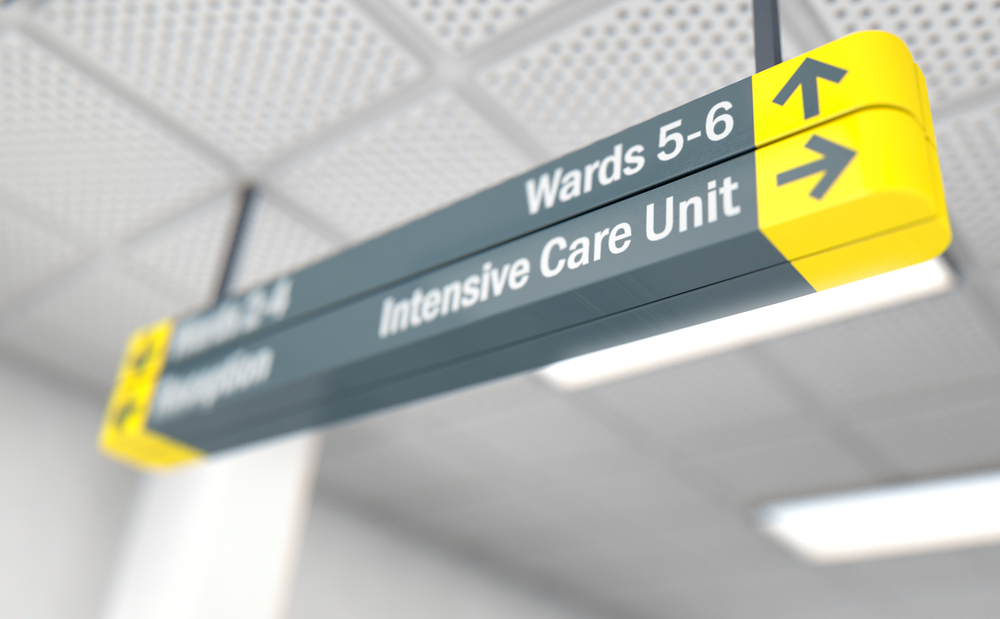Acute renal failure (ARF) has become more complex than it used to be. Decades ago when hemodialysis was first used regularly in the intensive care unit (ICU), most ARF patients had uncomplicated end-stage renal disease (ESRD)—that is, renal failure not associated with other organ failures. The patients were hemodynamically stable, and they tolerated hemodialysis, which was used to replace the excretory functions of the kidneys and sustain homeostasis.
Today, ICU patients rarely have uncomplicated ARF. Instead, ARF routinely develops as part of multi-organ failure. About half of ARF cases result from sepsis. Cardiac failure leads to hemodynamic instability, resulting in the need for large volumes of I.V. fluid and vasoactive drugs to support blood pressure. And pulmonary failure frequently results in ventilator dependence.
Unlike ESRD patients, ICU patients with ARF need therapy that provides temporary organ support while the kidneys regain function. And that’s what continuous renal replacement therapy (CRRT) provides.
Over the last several years, nephrology and critical care clinicians have increasingly recognized the advantages of CRRT for critically ill patients. Today, many experts consider conventional hemodialysis unsuitable for ICU patients because its high fluid removal rate over a short period of time contributes to the hemodynamic instability so common in ARF patients.
Understanding CRRT
CRRT encompasses several dialysis therapies developed specifically to treat ARF in ICU patients. Because CRRT takes more time and uses lower fluid removal rates than conventional, intermittent hemodialysis, it can provide renal replacement without causing fluctuations in hemodynamic stability.
CRRT can also remove significantly more toxins than conventional hemodialysis, and the solute removal requirements are greater for a critically ill ARF patient than for an ESRD patient treated with conventional hemodialysis. The conditions commonly leading to complicated ARF—such as sepsis, trauma, and certain surgical procedures—create a highly catabolic state in which tissue breakdown accelerates. This triggers a high rate of toxin generation. The resulting retention of toxins rapidly leads to uremic signs and symptoms.
In a recent study of nearly 30,000 ICU patients from 54 hospitals in 23 countries, about 6% of patients admitted to an ICU developed ARF. Among these patients, the risk factors for mortality included vasopressor use, mechanical ventilation, shock, and combined liver-kidney failure. These clinical characteristics are typical of patients who need CRRT rather than conventional hemodialysis. In the study, CRRT was the first option used in 80% of patients requiring dialysis.
Caring for CRRT patients
Nurses can manage CRRT patients in one of two ways. Either critical care nurses in the various ICU specialties manage the patient and the CRRT system, or the dialysis nurse team and the critical care nurse team collaborate. With the second option, the dialysis nurse team manages the CRRT system setup, patient connection, and patient disconnection, and the critical care nurses manage the patient and system during treatment.
Because critically ill ARF patients treated with CRRT undergo continuous fluid, electrolyte, and acid-base balance management, nurses must perform an ongoing assessment of all organ systems, including the cardiovascular, respiratory, gastrointestinal, renal, and neurologic systems. Also on an ongoing basis, nurses must assess and manage the CRRT system’s extracorporeal circuit (hemofilter and tubing set), vascular access device, and alarms.
Pay particular attention to changes in fluid and electrolyte balances. A physician typically orders the net fluid loss for the patient. As a nurse, your role is to accurately monitor and document intake and output, making adjustments as needed to the CRRT system. Review the patient’s laboratory test results. Abnormal electrolyte levels may require a change in the dialysate or replacement solutions. Report abnormal values to the physician, who will order any solution changes.
Monitor the patient’s body temperature. Because of the extracorporeal blood circuit exposure to room temperature and the exposure of the blood to room temperature solutions, the patient’s temperature may drop. To maintain normal body temperature, use the CRRT machine’s return-blood or fluid warmer.
Checking for complications
Complications can arise from the patient’s condition, the blood access catheter, or the CRRT system itself. When a CRRT system alarm sounds, check the patient first. If too much fluid has been removed, the patient can become hypotensive; if too little fluid has been removed, the patient’s fluid overload can worsen.
If systemic anticoagulation is used, monitor the patient for complications from too little or too much anticoagulant. Citrate, which binds with ionized calcium to prevent the progression of the clotting cascade, may be used for regional anticoagulation. If so, monitor the patient’s and the circuit’s ionized calcium levels per facility protocol to ensure the appropriate citrate dose is delivered and the desired effect is achieved.
During treatment, assess the venous access catheter for patency. Commonly, a central venous catheter is used. If your patient is hypotensive, removing blood during CRRT can be challenging and may result in catheter clotting, machine alarms, and a need to reposition or replace the catheter. Monitor the catheter exit site for signs of infection. If you note such signs, immediately notify the physician.
CRRT systems are designed with safety systems that alert you to any abnormal operating state. Make sure you learn to manage the system’s alarms, so you can take the manufacturer’s recommended action to correct any problems. Remember, always check the patient first. Then check the vascular access, assess the CRRT hemofilter for patency, and finally address machine-specific issues.
Using the RIFLE system
Using creatinine measurements alone to diagnose ARF in critically ill patients is difficult for several reasons, including variations in measuring methods and differences in patients’ body masses, ages, stages of renal blood flow compromise, and postsurgical effects. But a new approach to defining and diagnosing ARF, called the RIFLE system, is rapidly being incorporated into clinical practice. RIFLE is an acronym:
• I = kidney Injury
This classification system uses two defining criteria: serum creatinine levels and urine output.
Several studies confirm that RIFLE class severity is associated with increasing ICU and hospital lengths of stay, a greater need for dialysis, and higher mortality. One study indicated that ARF patients reaching the F class had a hospital mortality rate five times higher than similar ICU patients without ARF. Only 14% of these F-class patients received any form of renal replacement therapy, suggesting systematic underuse of dialysis.
Improving outcomes
Patients who don’t recover renal function after an episode of ARF in the ICU, the E-class patients, require long-term dialysis support, which has both quality-of-life and economic implications. A recent analysis found that healthcare costs in the year after hospital discharge were seven times higher for patients who didn’t recover renal function after ARF than for those who did.
Two recent observational studies involving nearly 3,500 patients show a significantly higher rate of renal recovery after CRRT compared with conventional hemodialysis. Although these results need further confirmation, they suggest an important advantage for CRRT.
Other recent outcome data indicate that patient survival among those who receive CRRT is directly related to the dose of therapy. The dose is achieved by the blood flow rate and the fluid (replacement or dialysate) flow rates. The minimum effluent dose prescribed should equal 35 mL/kg/hour.
Your role in better outcomes
As the number of critically ill ARF patients increases, CRRT is being used more and more in ICUs. You can help improve outcomes in critically ill ARF patients by keeping the RIFLE criteria in mind as you assess the patient’s laboratory and hourly intake-output values. And you can improve outcomes by collaborating with the prescribing physician to ensure the minimum acceptable dose is being prescribed and delivered.
Selected references
Bell M, Granath F, Schon S, Ekbom A, Martling CR. Continuous renal replacement therapy is associated with less chronic renal failure than intermittent haemodialysis after acute renal failure. Intensive Care Med. 2007;33(5):773-780.
Clark WR, Letteri JJ, Uchino S, Bellomo R, Ronco C. Recent clinical advances in the management of critically ill patients with acute renal failure. Blood Purif. 2006;24:487-498.
Dirkes S, Hodge K. Continuous renal replacement therapy in the adult intensive care unit. Crit Care Nurse. 2007;27:61-81.
Kellum JA, Levin N, Bouman C, Lameire N. Developing a consensus classification system for acute renal failure. Curr Opin Crit Care. 2002;8:509-514.
Sinert R. Acute renal failure. May 2006. www.emedicine.com/emerg/topic500.htm. Accessed March 19, 2008.
Uchino S, Kellum JA, Bellomo R, et al. Acute renal failure in critically ill patients: a multinational, multicenter study. JAMA. 2005;294.813-818.
Visit www.AmericanNurseToday.com/journal for a complete list of selected references.
Catherine DiMuzio is Director of Intensive Care Therapy Development at Gambro Renal Products, Inc., in Lakewood, Colo.


















